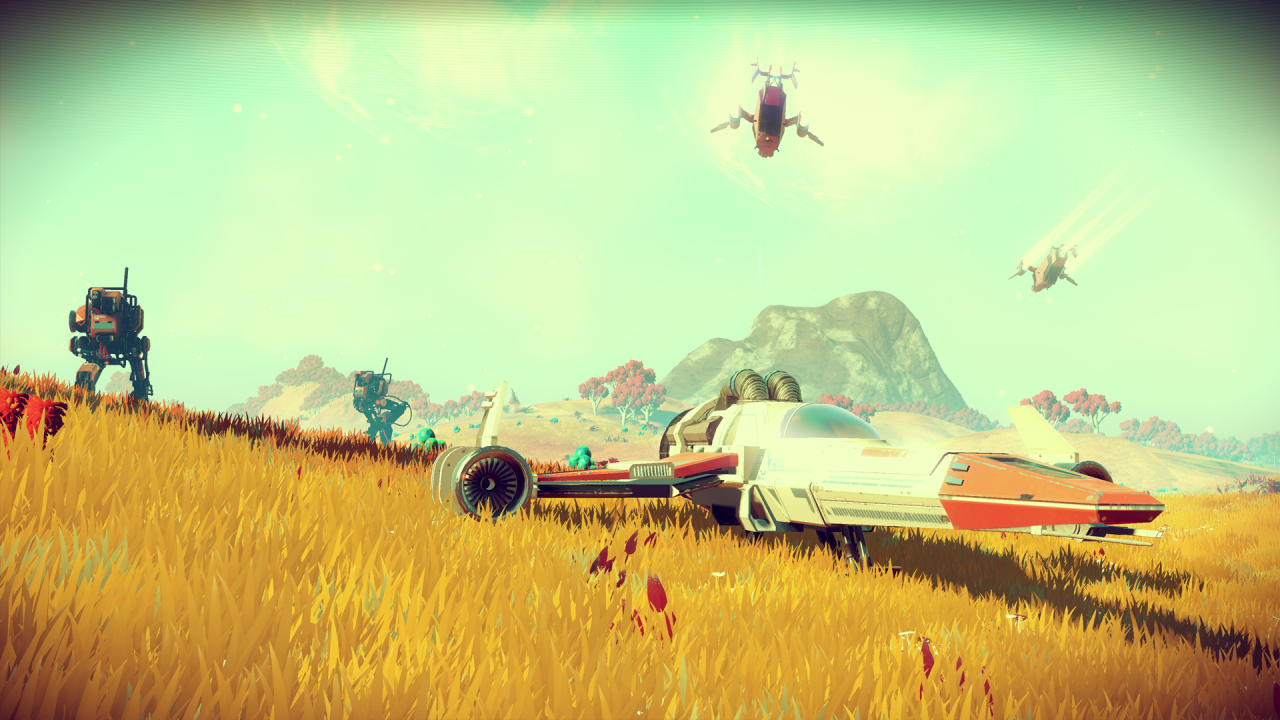
The Forever Game (and why there isn’t one)
When I talk about procedural generation with people, they often mention the idea of a game that you can play forever.
This is especially topical, since No Man’s Sky releases this week and the dream of The Last Game is written all over it. Any vast procedural system seems to accrue the idea that it can be played forever. I’ve heard it about Spore, NetHack, Elite, Minecraft…
This isn’t a new idea. Some of the earliest computer games were inspired by the idea of using the computer as a virtual dungeon master. The first D&D based dungeon crawl games were written within a year of the publication of those early faux woodgrain boxes. Roguelikes followed soon after: the idea of a game you can play indefinitely has a very strong pull.
My personal model of videogames is that they are a physical interface to a metaphysical, mathematical space. The rules are our bridge between the material bits that we directly interact with and the abstract ideas and systems they describe. But they’re also anchored by those rules; they can’t exceed them. Even in an infinite space, the rules will be a smaller and more easily learnable. Humans are really good at pattern-matching.

Even with an infinite play space, the rules that you are learning are finite. Videogames are nested combinations of emergent systems and progression paths, and even complex systems can eventually be black boxed. You will learn how the generation works, and it will no longer surprise you.
Which is not to say that a virtual dungeon master is useless or impossible. As Warren Spector has pointed out, an AI that can help construct an experience would open up a lot of design space. And there’s a lot of research in that direction–it’s one reason why I’m always excited about NaNoGenMo.
But I’ve generated potentially infinitely long novels, and it’s not all that it’s cracked up to be. I could easily have made the output longer, but it wouldn’t have been any more interesting. Indeed, one of my goals for this year is to have just a couple of readable chapters.
Minecraft has the same number of possible seeds as No Man’s Sky has planets (2^64). No Man’s Sky has a larger expressive range, but Minecraft’s player constructions have a range that’s vastly larger still. Because there are generators that are larger than a human can explore: creativity and the universe itself.

It’s not the size of the generated space that counts. Minecraft remains popular because its procedural generation speaks via the same flexible blocks that the players can use to talk back, and the vibrant modding community is hard at work extending it.
(That’s the same reason that I like games that have ongoing development: human developers adding features tends to be much more effective than even the best current algorithm.)
Someday, we may have a creative machine that can provide general-purpose new gameplay on the fly. But there’s a really easy way to get brand-new, completely different gameplay: play a different game. In terms of abstract cost-effectiveness, it’s likely that it’s always going to be cheaper to make two completely different games than it is to make one system that can surprise you equally well.
And there are games that don’t need to go on forever. Kentucky Route Zero is my favorite game of all time, but I don’t talk about it much here because it doesn’t have a lot of procedural generation. It doesn’t need it. (If I was writing the interactive narrative blog I’ve threatened to start, half the posts would be about KRZ.)
Don’t get me wrong–procedural generation can be very exciting. But I value it for the way that its flexibility enables more robust systems and more fully-realized worlds. Or the way that it can surprise you if you let it have enough expressiveness. And even when I like it for its infinite reaches, I don’t think that it is ever going to result in the last game I ever need to play.
